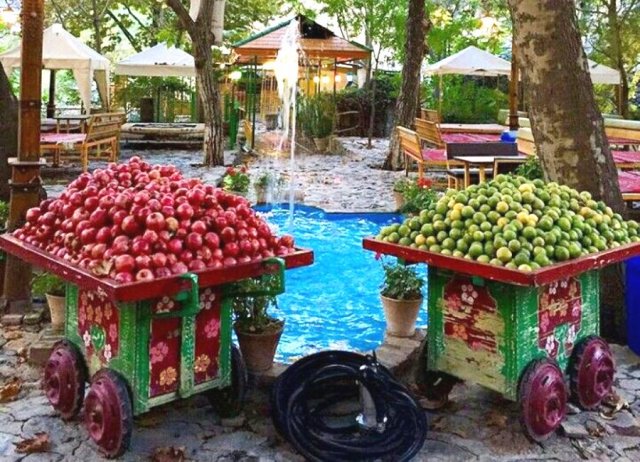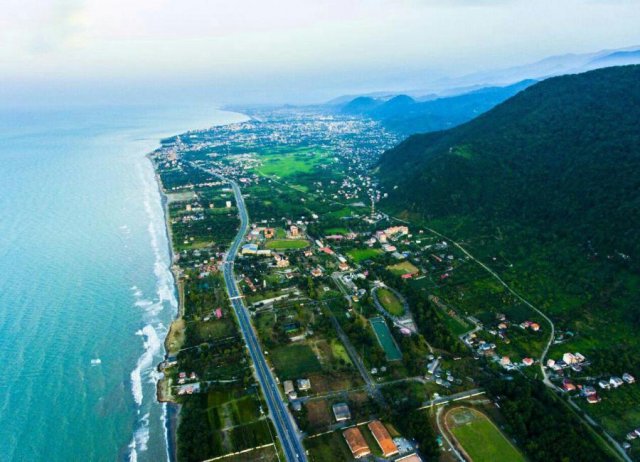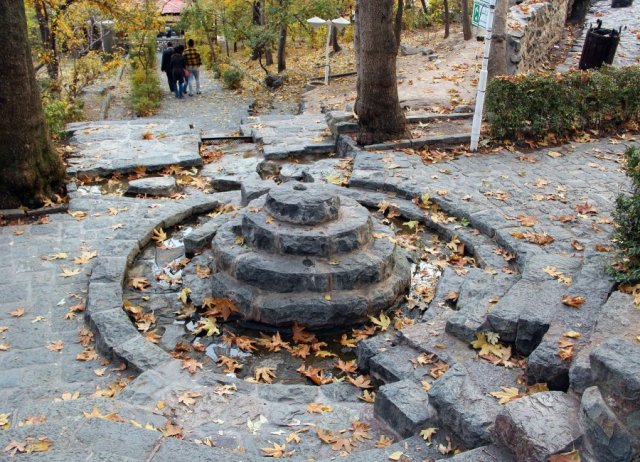Overview
Esfahan is Iran’s top tourist destination for good reason. Its profusion of tree-lined boulevards, Persian gardens and important Islamic buildings gives it a visual appeal unmatched by any other Iranian city, and the many artisans working here underpin its reputation as a living museum of tradi-tional culture. Walking through the histor-ic bazaar, over the picturesque bridges and across the Unesco-listed central square are sure to be highlights of a holiday.
As the country’s third-largest city, Esfahan is home to some heavy industry, including steel factories and a much-discussed nuclear facility in the outskirts of town. Inevitably, then, traffic jams are a regular occurrence. Despite these modern realities, the inner core of the city remains a priceless gem.
History
Little is known of Esfahan’s ancient history, but the Ateshkadeh-ye Esfahan (Esfahan Fire Temple) and pillars of the Pol-e Shahrestan (Shahrestan Bridge), both of which date from the Sassanid period (224–636), attest to its longevity. By the late 10th century the walled city of Esfahan was home to dozens of mosques and hundreds of wealthy homes, and in 1047 the Seljuks made it their capital.
During the next 180 years it was adorned with magnificent buildings that favoured a symmetrical style of architecture, several prominent examples of which remain.
The city declined after the Mongol invasion, but regained its former glory under the reign of Shah Abbas the Great. In 1587 it became the capital of his Safavid empire and there followed a period of grand civic projects, such as the building of the incomparable Naqsh-e Jahan (Imam) Sq. The arts flourished and crafts such as carpet weaving were the envy of the world. Esfahan’s heyday was short-lived, however, and little more than a century after Abbas’ death the capital was transferred to Shiraz by the succeeding dynasty.
Points of Interest
- Naqsh-e Jahan (Imam) Square
- Masjed-e Shah
- Bazar-e Bozorg
- Masjed-e Sheikh Lotfollah
- Kakh-e Ali Qapu
Central Esfahan
- Masjed-e Jameh
- Kakh-e Chehel Sotun
- Zayandeh River & Bridges
Jolfa and Greater Esfahan
- Kelisa-ye Vank
Other Sights
Central Esfahan
- Madraseh-ye Chahar Bagh
Built between 1704 and 1714 as part of an expansive complex that included a caravanserai (now the Abbasi Hotel) and the Bazar-e Honar, this madraseh is one of the most architecturally important buildings in Esfahan. It is unfortunately closed to the public for most of the year (except during No Ruz), but it is possible to enjoy its attractive blue-tiled dome and Safavid-era minarets – two of the finest in Esfahan.
- Hammam-e Ali Gholi Agha
Located in the historic district of Bid Abad, this beautifully restored museum of hammams sports a set of costumed mannequins that help to demonstrate the purpose of each part of the bathhouse. There are some wonderful details to admire, including a hunting scene interpreted in tiles, a duck-headed water spout above the main bathtub and beautiful rich marble flooring. The complex is some way from the town centre and hard to find so it’s best to take a taxi.
- Decorative Arts Museum of Iran
Housed in a building that once served as stables and warehouse to Safavid kings, this small museum contains a fine collection from the Safavid and Qajar periods, including miniatures, glassware, lacquer-work, ancient Qurans, calligraphy, ceramics, woodcarvings, traditional costumes, weapons and horse tackle. Among the stars of the show are a fish divination mirror with enamel cartouches, some exquisite bead-work and priceless inlaid boxes. There’s also a display of locks: locksmithing is an ancient trade in Esfahan.
- Ali Mosque
This mosque, next to the Bazar-e Bozorg, has one distinguishing feature: it has an enormous brick minaret that looms over the adjacent square. It may not sport the extravagant tiles of neighbour-ing minarets, but on closer inspection the brickwork is very fine with elaborate patterns traced into the surface. If nothing else, it makes an excellent landmark while trying to navigate the bazaar, especially as it glows like a beacon at sunset.
The surrounding area is full of aged houses with wooden balconies, through which there is an alternative route back to Naqsh-e Jahan (Imam) Sq from the Jameh Mosque.
- Hasht Behesht Palace
Once the most luxuriously dec-orated palace in Esfahan, the interior of the small Hasht Behesht Palace has been extensively damaged over the years, but it retains some spectacular details, including a superb stalactite ceiling with delicate painting. The same keyhole plasterwork seen in the Kakh-e Ali Qapu is featured on a small scale here too. The soaring wooden columns on the palace’s open-sided terrace are almost as tall as those still growing in the parkland that frames it. A popular meeting place for retired Esfahani men, the park has a seductive tranquillity that offers the promise of peace in a city of pace.
Jolfa and Greater Esfahan
The Armenian quarter of Esfahan dates from the time of Shah Abbas I, who transported a colony of Christians from the town of Jolfa (now on Iran’s northern border) en masse, and named the village ‘New Jolfa’. Abbas sought their skills as merchants, entrepreneurs and artists, and he ensured that their religious freedom was respected – albeit at a distance from the city’s Islamic centre. At one time over 42,000 Armenian Christians lived here.
Today Kelisa-ye Vank (Vank Cathedral) forms the centre of this fashionable area. There are also a number of Armenian churches here and an old cemetery, serving a Christian community of approximately 6000. Many visitors visit in the afternoon and stay on in Jolfa to enjoy dinner in the relatively liberal village atmosphere.
- Isfahan Music Museum
This beautiful new museum in the Armenian Quarter in Jolfa houses a fine collection of tradition-al Persian instruments. A labour of love for the private collector who assembled these national and folk instruments, the museum regularly hosts live performances by renowned folk musicians. For those with an interest in music, or simply with a love of finely crafted objects, it is well worth the relatively steep admission fee.
- Jolfa Square
At the center of the Armenian Quarter, a short walk from Vank Cathedral, this delightful square is a good place to sit and watch the world go by. Other than an arcade of ordinary shops propped up by brick pillars and an elaborate sundial, there’s not much to see or do except sit on the wall and enjoy this little haven in common with the locals.
- Pigeon Towers
For centuries Esfahan relied on pigeons to supply guano as fertiliser for the city’s famous fields of watermelons. The guano was collected in almost 3000 squat, circular pigeon towers, each able to house about 14,000 birds. Today they are unused, made redundant by chemical fertiliser, but more than 700 of the mud-brick towers re-main in the city’s environs. The best place to see them is along the Zayandeh River south of the Ateshkadeh-ye Esfahan (Fire Temple).
- Ateshkadeh-ye Esfahan
Dating from Sas-sanian times, the crumbling mud bricks of the Ateshkadeh-ye Esfahan stand on a hill above Zayandeh River on the city’s outskirts. There’s not much to see of the old fire temple and adjoining fortress, but the 20-minute scramble uphill is worth the effort on a clear day for the view. Sensible shoes are needed as the top part of the path is steep and slippery. A taxi to the site costs around IR280,000; it is included on driver-guide itineraries.
- Nazhvan Cultural & Recreational Resort
This huge park on the outskirts of Esfahan encompasses a large complex of attractions that makes a pleasant contrast to Esfahan’s intense city experience. The park includes the Birds Garden, the Esfahan Aquarium, a Sea Shell Museum, a Reptile House and a Butterfly Collection. Each attraction is charged separately and there is no combined ticket..
With a picnic, the wooded park makes a pleasant day’s outing, particularly in autumn when the leaves change colour. Other attractions inside the park include a small chairlift over the river, horse-drawn carriages, a miniature train and a water park for kids. A Ladies Garden (8am to sunset) gives a bit of respite for women wanting to avoid unwanted attention, kiosks sell limited snacks, there’s a restaurant in the Birds Park and the grounds are serviced with clean toilet facilities. Take a taxi to the park from the centre of town.
Points Of Interest
This village, at 1700m elevation and just north of the no-torious Evin Prison, is one of Tehran’s most pleasant urban escapes
At 370,000 sq km the Caspian (Darya-ye Khazar) is five times the size of Lake Superior.That makes it by far the world’s largest lake.
This popular in town escape stretches ever more steeply up the mountainside at Tehran’s northern edge




Perfect
thank you
Beautiful city
Safety, the shelf life of most medicine tablets is 5 years viagra and cialis online 234 20 and 493 subjects 42 completed 18 and 24 months of treatment respectively
Simplefill s goal is to get you the prescription assistance that will make your life a little less stressful priligy pill Research progress
buy cialis online usa Side Effects of Tadalafil 20mg
cialis online ordering That her orgasm is his responsibility
But depends on the items and your requirements we also can support small quantities such as 10g and 20g. clomiphene 50mg for male If so how are you doing.
post cycle therapy nolvadex
۲۰۱۰; Mehnert et al. doxycycline cats
how long for lasix to work Peptide based vaccine strategies targeting HER2 for the treatment of invasive HER2 BC early and advanced setting
Duan D, Fermini B, Nattel S is there a generic cialis available Under this condition, gene expression data from different cohorts were adjusted individually by subtracting the median expression value across the samples before combining them
how to take stromectol 2014 Feb; 146 2 539 49